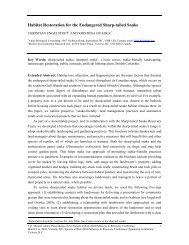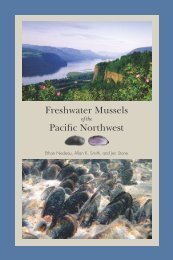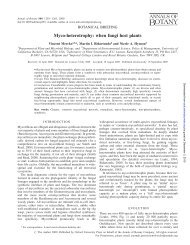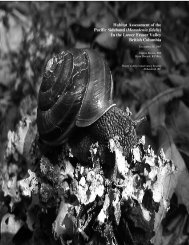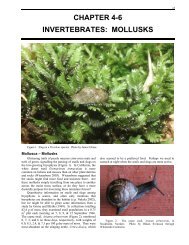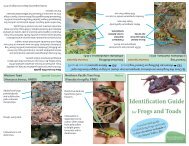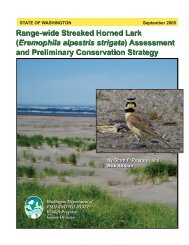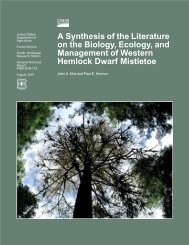Coastal Cutthroat Trout as Sentinels of Lower Mainland Watershed ...
Coastal Cutthroat Trout as Sentinels of Lower Mainland Watershed ...
Coastal Cutthroat Trout as Sentinels of Lower Mainland Watershed ...
Create successful ePaper yourself
Turn your PDF publications into a flip-book with our unique Google optimized e-Paper software.
48at Hood Canal in Puget Sound (Big Beef Creek), averaging 100 and 400 smolts perstream, respectively. This contr<strong>as</strong>ts with a marked declining trend in the <strong>Lower</strong>Columbia catch <strong>of</strong> cutthroat, <strong>as</strong> well <strong>as</strong> adults counted at a fishway at the Kalama River, atributary <strong>of</strong> the lower Columbia River (Figure 16).Figure 16. Trends in counts <strong>of</strong> adult wild sea-run cutthroat at Kalama Falls at theKalama River from 1976 to 1995, and estimated catches <strong>of</strong> sea-run cutthroat trout in thelower Columbia River from 1965 to 1995 (from Leider 1997).Al<strong>as</strong>ka: In southe<strong>as</strong>tern Al<strong>as</strong>ka, some trend data is also available from early counts atPetersberg Creek, <strong>as</strong> well <strong>as</strong> at Lake Eva and Auke Creek. Populations appear stable toincre<strong>as</strong>ing (Table 2). Catch trend data for management h<strong>as</strong> been obtained from anglerssince 1990 for both southe<strong>as</strong>t Al<strong>as</strong>ka and Prince William Sound. An estimated 7,100co<strong>as</strong>tal cutthroat were harvested in saltwater (22 %) and freshwater (78 %) in 1994 in 10fishery are<strong>as</strong>.General comments on US population trends: Overall, potential causes for the apparentdeclines to collapses in sea-run cutthroat abundances and catches in Oregon and southernW<strong>as</strong>hington are uncertain, but are attributed to: (1) a decline in near-shore oceanproductivity; (2) impacts on genetics and fisheries from wide-spread use <strong>of</strong> hatchery searuncutthroat trout; and (3) a reduction <strong>of</strong> stream and estuary habitat resulting from landand water use activities (Anon 1997, Palmisano 1997). Although little can be done toalter ocean conditions, hatchery and land/water use practices are considered moremanageable. As a conservation me<strong>as</strong>ure, sea-run cutthroat stocking in Oregon w<strong>as</strong>ph<strong>as</strong>ed down by 1995 and terminated by 1997. Since then restoration efforts have beenramped up by implementing the Oregon Plan for Salmonids and Streams (Satterthwaite2002).



